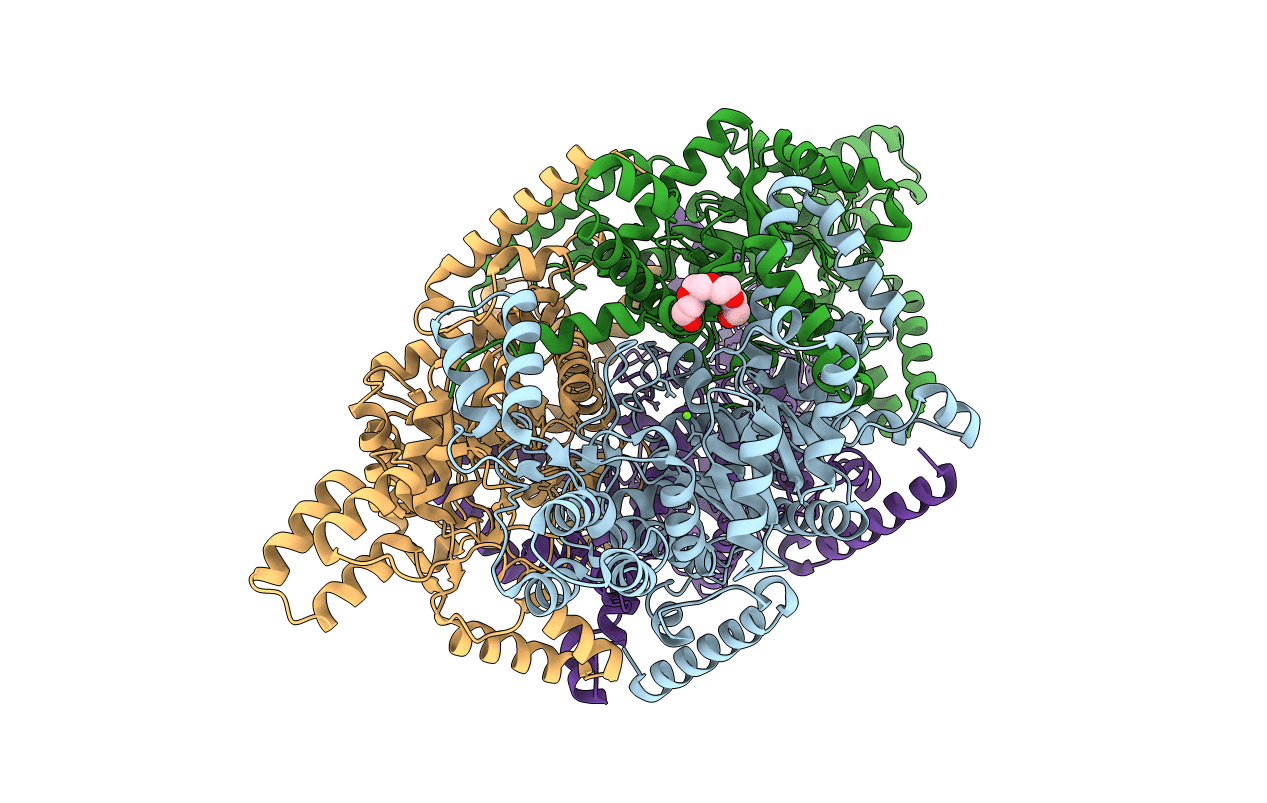
Deposition Date
2021-03-09
Release Date
2021-06-23
Last Version Date
2023-11-29
Entry Detail
PDB ID:
7EBC
Keywords:
Title:
Crystal structure of Isocitrate lyase-1 from Saccaromyces cervisiae
Biological Source:
Source Organism:
Saccharomyces cerevisiae (Taxon ID: 4932)
Host Organism:
Method Details:
Experimental Method:
Resolution:
2.30 Å
R-Value Free:
0.21
R-Value Work:
0.18
R-Value Observed:
0.19
Space Group:
P 21 21 21


